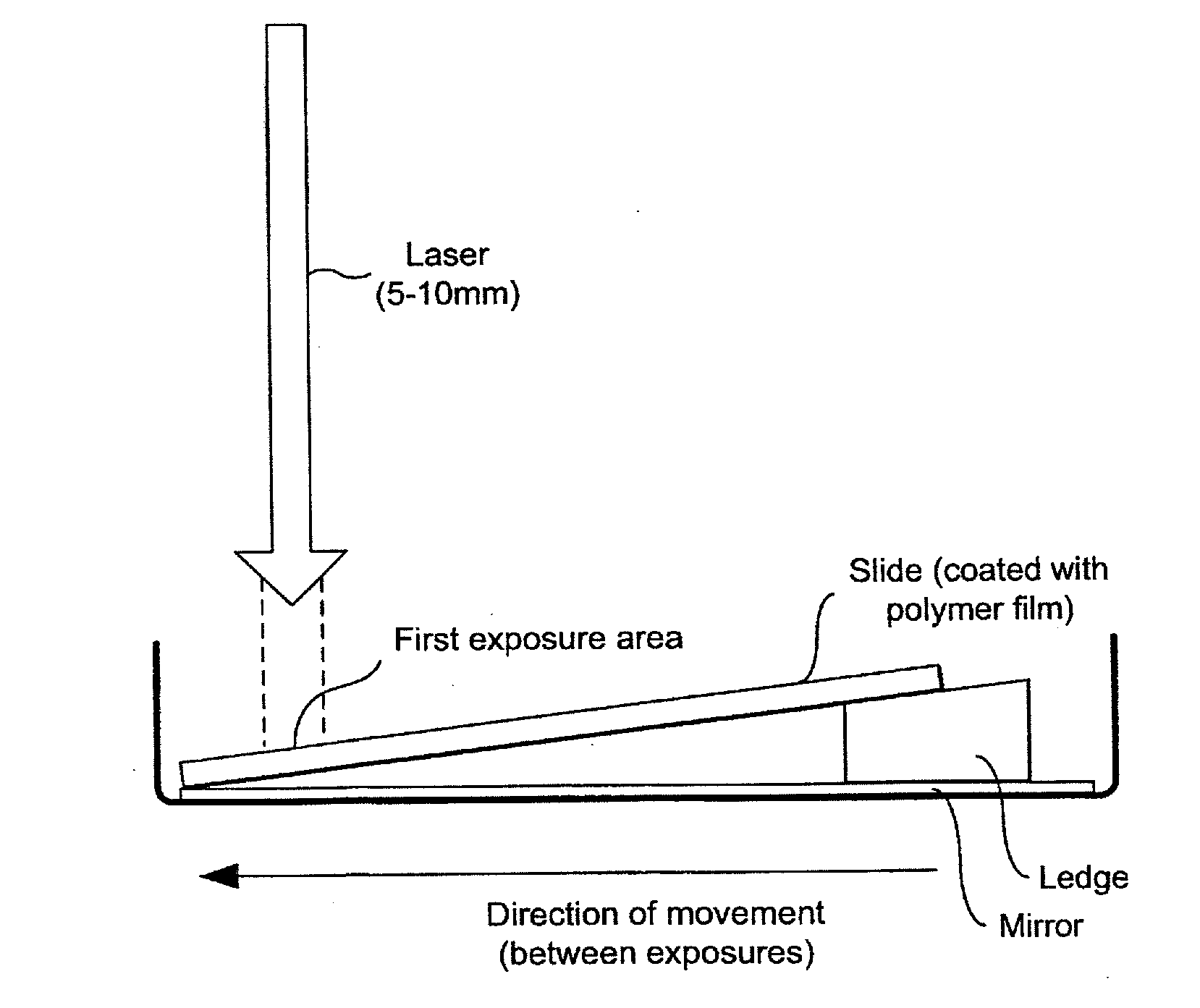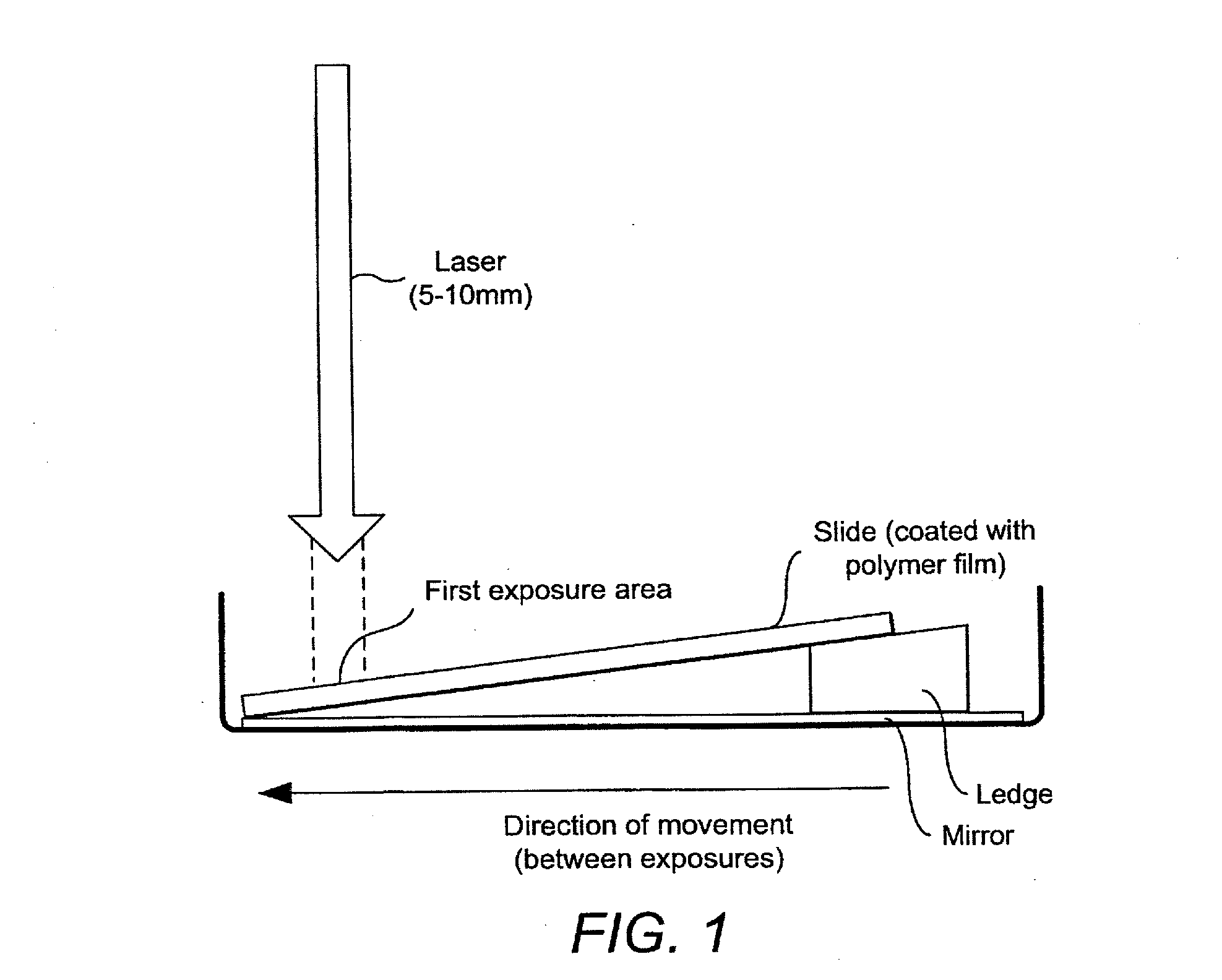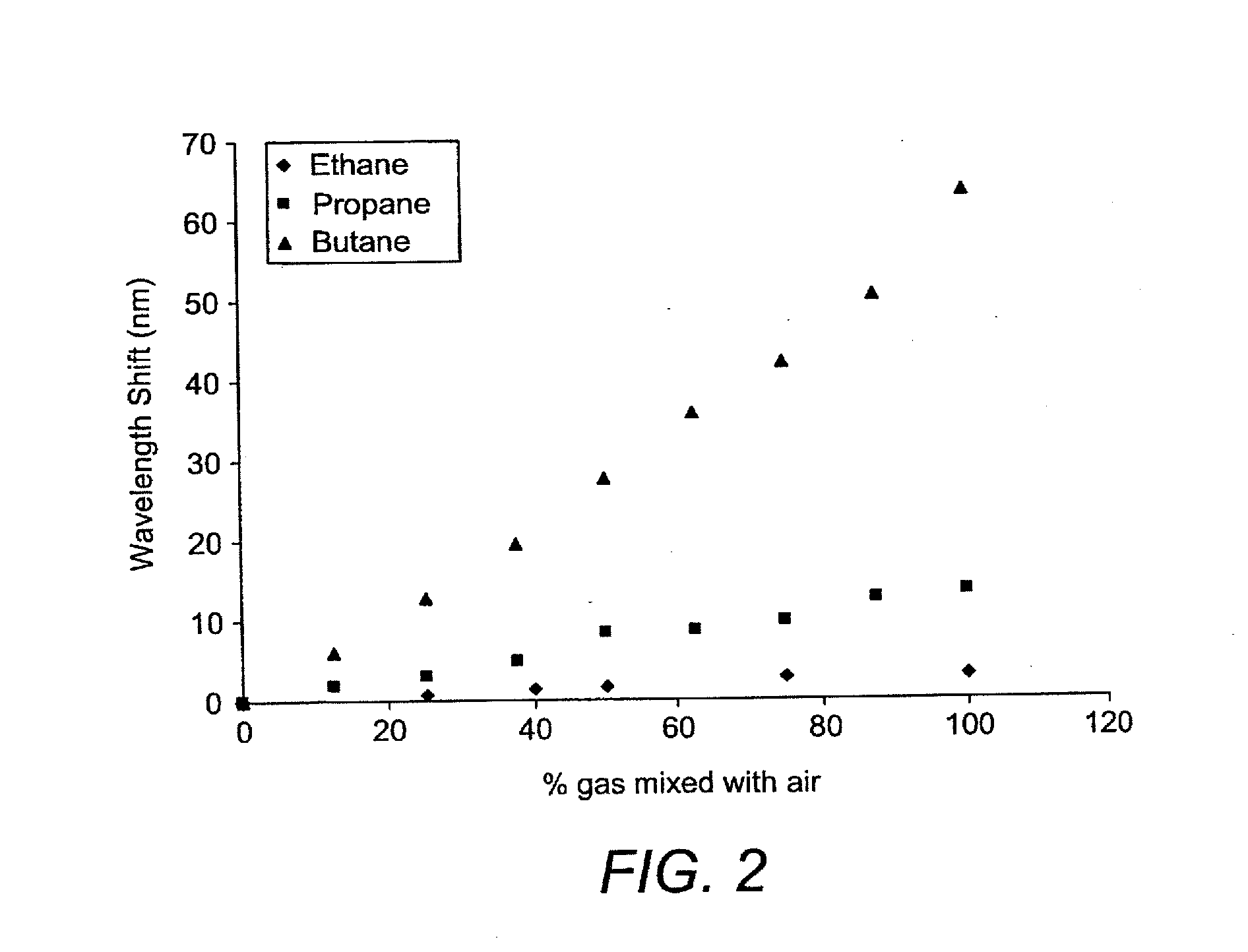Method of Production of a Holographic Sensor
a technology of holographic sensor and holographic sensor, which is applied in the direction of instruments, substrates with holograms, holographic nature/properties, etc., to achieve the effect of reducing the ability of alcohols or other hydrophilic solvents to swell pdms, rapid detection rate and rapid measurement of water conten
- Summary
- Abstract
- Description
- Claims
- Application Information
AI Technical Summary
Benefits of technology
Problems solved by technology
Method used
Image
Examples
example 1
[0186]PDMS solution (Sylgard 184, Dow Corning) was prepared in accordance with the manufacturer's instructions. A ration of 10:1 (w:w) of polymer and hardener were thoroughly mixed at room temperature and allowed to stand for 30 minutes for any air bubbles to dissipate from the solution. The solution was then dispensed in 200 μl aliquots onto clean, glass microscope slides. The solution was spread evenly over the surface of the slides using the side of a pipette tip. The solution on each slide was then cured at 80° C. for 2 hours.
[0187]Alternatively, the slides can be prepared by placing a clean glass surface in position, dispensing the PDMS solution on the upper surface thereof and coating a layer of the solution using the Mayer bar method—the Mayer bar being a road of 1 cm in diameter, close-wound with a 0.2 mm wire. The glass sheet was then cured at 80° C. for 2 hours.
[0188]Next, 200 μl of a 0.1M silver pentafluoropropionate (AgPFP) solution in THF was dispensed onto the cured PD...
example 2
[0196]PDMS coated glass slides were prepared as described in Example 1. 200 μl of a 0.2M solution of hydroquinone in THF was dispensed onto a clean glass surface. The PDMS coated surface of the glass slide was placed on top of the hydroquinone solution of the clean glass surface and allowed to soak the hydroquinone solution for approximately 3 minutes. The slide was then removed and dried in a stream of cool air.
[0197]200 μl of a 0.1M silver pentafluoropropionate solution in THF was dispensed onto a clean glass surface. The PDMS coated surface of the slide was placed on top of the AgPFP solution and allowed to soak the AgPFP solution for approximately 3 minutes. The slide was then removed and dried in a stream of warm air until an amber-brown silver precipitate was visible.
[0198]The slide was exposed to a Nd:YAG frequency doubled laser beam for a period of 6 ns as per Example 1. A segment of the exposed slide was inserted into the twin-cell cuvette as described in Example 1 and chlo...
example 3
[0199]PDMS coated glass slides were prepared as described in Example 1. 200 μl of a 0.2M solution of hydroquinone in THF was mixed with 200 μl of a 0.1M solution of AgPFP in THF and subsequently dispensed onto a clean glass surface. The PDMS coated surface of the glass slide was placed on top of solution on the clean glass surface and the solution was allowed to perfuse into the PDMS film for approximately 3 minutes. The slide was then dried in a stream of warm air and exposed to the beam of laser light as described in Example 1.
[0200]The sensitivity of the holographic reflection grating in the PDMS support medium to hexane vapour and hexane saturated water is illustrated in FIG. 5. The sensitivity of the holographic reflection grating in the PDMS support medium to camping gas (6:4 butane:propane) is illustrated in FIG. 6.
PUM
| Property | Measurement | Unit |
|---|---|---|
| grain size | aaaaa | aaaaa |
| angle | aaaaa | aaaaa |
| wavelength | aaaaa | aaaaa |
Abstract
Description
Claims
Application Information
 Login to View More
Login to View More - R&D
- Intellectual Property
- Life Sciences
- Materials
- Tech Scout
- Unparalleled Data Quality
- Higher Quality Content
- 60% Fewer Hallucinations
Browse by: Latest US Patents, China's latest patents, Technical Efficacy Thesaurus, Application Domain, Technology Topic, Popular Technical Reports.
© 2025 PatSnap. All rights reserved.Legal|Privacy policy|Modern Slavery Act Transparency Statement|Sitemap|About US| Contact US: help@patsnap.com



